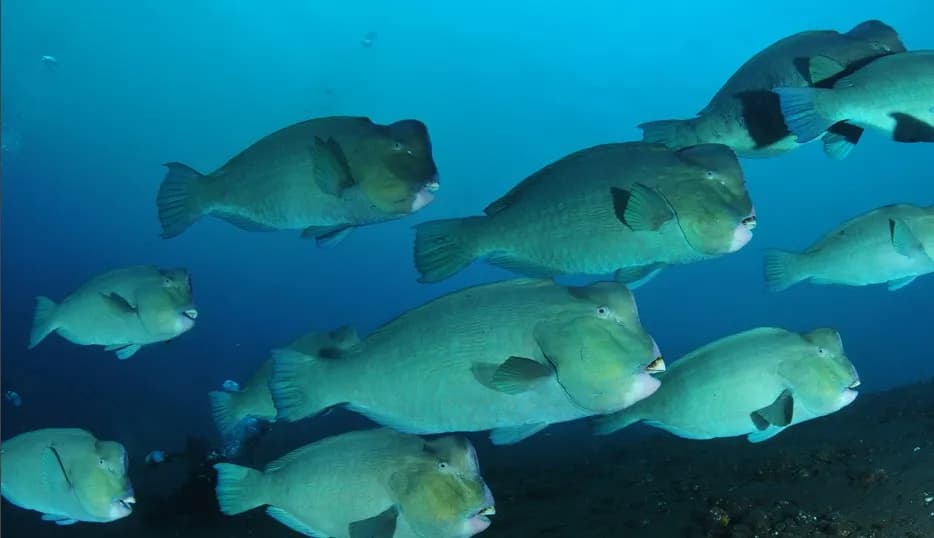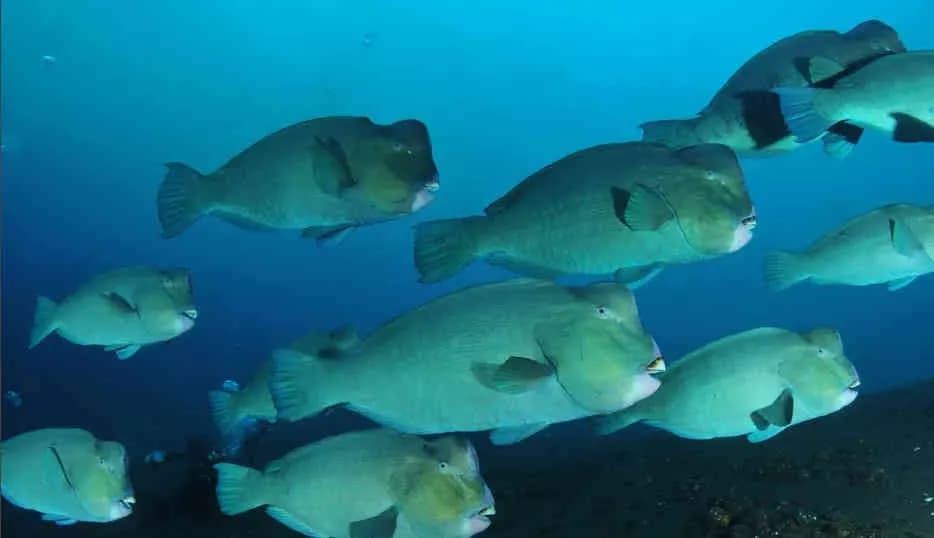
Sipadan offers world-class diving with vibrant coral walls, abundant marine life, and unique underwater ecosystems. Divers can encounter barracudas, turtles, and schools of fish, making it one of the world’s premier dive destinations.
Scuba Dive Level
Advanced Diver

Visibility
60 to 100 feet (15 to 30 meters)
Average Water Temperature
85
Shark Encounters
Pelagic Encounters
But bear in mind that restricted access means many scuba divers will also spend much of their time exploring the sites of nearby Mabul and Kapalai, which offer world-class critter diving in their own right.
Sipadan has been closed to tourists since 2004, and there are no land-based resorts on the island. Access is predominantly via day-trip boats from resorts on the nearby islands of Mabul and Kapalai, or Semporna on the mainland.
The island of Sipadan lies off the southeast coast of Sabah, a province of Malaysia on the exotic island of Borneo. Long heralded a mecca for dive travel, the island has been rated as a world-class dive destination since Jacques Cousteau visited in the early 80s.
Sipadan boasts one of the richest marine habitats in the world, with over 3,000 species of fish and hundreds of coral species making up an incredibly rich and vibrant ecosystem. As Malaysias only oceanic island, the nutrient-rich waters of the Celebes Sea attract an abundance of marine life, including all sizes of reef and pelagic fish, sharks, turtles, and some fascinating critters.
Diving is only possible at Sipadan Island Park with a permit, so make sure you let your resort know that you plan to dive there so that they can arrange access.
Sipadan's nearest neighbors, Mabul and Kapalai, boast phenomenal muck diving. Mabul is 45-minutes by boat from Sipadan, with a range of accommodation from budget lodges through to luxuxry resorts. And just 10-minutes away, the sandbar of Kapalai boasts a single exclusive resort built out across the shallow lagoon. You can also stay on a decommissioned oil rig and dive straight from the platform, or embark on the Celebes Liveaboard for 4 or 7-night trips with daily passes to Sipadan Island.
The diving season in Sipadan, Mabul, and Kapalai is year-round, with April to December offering the calmest surface conditions.
Sipadan islands mushroom shape and deep walls attract a huge amount of marine life into a very small area. On one side of the island, dramatically deep walls reach 2,000 feet just offshore, whereas sites on the opposite side are characterized by gently sloping reefs that give way to steeper walls much further out.
This is one of the big fish capitals of the world, and every dive site is loaded with flashy schools of anthias, jacks, triggerfish, bumphead parrotfish, and barracuda. All along the reef, angelfish, anemone fish, nudibranchs, lionfish, eels, octopus, and many more species can be found lurking between coral heads. The shallow reefs are also great areas to find lounging whitetip reef sharks and resting crocodile fish. On every dive at Sipadan expect to encounter turtles munching on sponges and algae, sleeping on ledges, or simply moseying around.
In contrast, Mabul and Kapalai offer some of the best muck diving in Malaysia, with a wide variety of rare and unusual critters at almost every site. Leaf scorpionfish, frogfish, ribbon eels, and ghost pipefish are regularly spotted, as well as blue-ringed octopus, the elusive mimic octopus, seahorses, and some unusual nudibranchs.
The top best dive sites in Sipadan. Pick a spot or read the entire list:
Sipadans iconic dive site, each morning chevron barracuda form in massive spiraling shoals just off the reef. Schooling bigeye and giant trevally pour over the ocean shelf from the shallows into deeper water, and the occasional dogtooth tuna can be spotted. Manta rays, zebra sharks, and even hammerhead sharks are known to cruise the walls at Barracuda Point. As with all the sites on Sipadan, turtles and bumphead parrotfish abound, alongside Napoleon wrasse, and several types of triggerfish.
Reminiscent of the Hanging Gardens of Babylon, the topography at this site is terraced to form several drop-offs festooned in soft corals of various colors. Giant gorgonian sea fans hide all manner of macro life, and in the cracks of the terraces expect to spot gobies, sweetlips, hawkfish, moray eels, and coral groupers. Green and imbricate turtles are particularly common here, as are dozens of ribbontail stingrays.
An eerie site littered with the bones of turtles who have become lost in the complicated system of caverns and tunnels. The entrance is at 60ft, and home to shoals of various types of cave-dwelling fish species.
Numerous encounters with whitetip reef sharks give this site its name, however, there is much more in store here. The reef begins fairly shallow before disappearing suddenly to a depth of nearly 2,000 feet. Vertical walls are covered in cracks and ledges, with terraces awash with sponges of all shapes and sizes, black corals, and gorgonians. Expect to spot groupers, emperor angelfish, triggerfish, clownfish, boxfish, the list is endless.
At first appearance, this seemingly featureless site is chock full of weird and wonderful critters including mimic octopus and seahorses. This is Mabul's signature site, and not to be missed by macro-enthusiasts.
Diving in Sipadan, Mabul, and Kapalai is fantastic all year round, although conditions do vary throughout the season. From April to October waters are normally calm and glassy, comfortably warm, and with visibility up to 100ft. The rainy season runs from November to March, and windy periods in January, February, and August can increase surface chop and reduce visibility. Although this brings cooler water and air temperatures, amazing marine encounters and great diving are still the norm.
Getting to Sipadan’s neighboring islands of Mabul and Kapalai can be quite a task, but the journey is well worth it. Kota Kinabalu International Airport (BKI) is the main gateway, with flights available from many major Asian hubs. From Kota Kinabalu, a domestic flight takes you to Tawau Airport (TWU) on the southern tip of Malaysian Borneo. From Tawau, resort transport transfers you on the 90-minute journey to the port town of Semporna, where you’ll board a boat to your resort.
Access to Sipadan Island is heavily restricted through a permit system, with only 257 diving permits issued each day. Resorts are not able to guarantee Sipadan dives before guest arrival as permits are not allocated in advance, therefore the longer you stay the more chance you have of achieving multiple days diving at Sipadan.
There are numerous dive operators and resorts in the Sipadan area, many offering all-inclusive packages. The boat journey to Sipadan normally takes 20 to 30 minutes from the neighboring islands, and operators generally offer two dives per day. When diving at Sipadan is not possible, the house reefs and sandbanks of Mabul and Kapalai offer some fantastic muck diving.
Sipadan is a protected island covered in pristine rainforest, therefore all top-side activities are based on other islands in the region. Many of the resorts offer kayaking and beach sports, spa facilities, and plenty of long sandy beaches to relax on.
The province of Sabah in Borneo is definitely worth a few days of touring. Visit the jungles of Borneo and see the orangutans at the Sepilok Orangutan Sanctuary. They have a wonderful orangutan rescue/release program there. You can also visit the Labuk Bay Proboscis Monkey Sanctuary to watch some great wildlife.
If you are going to spend a few days in Kota Kinabalu, do some souvenir shopping at the Filipino market, or join a city tour to learn more about the people of Malaysia.
Explore Sipadan

